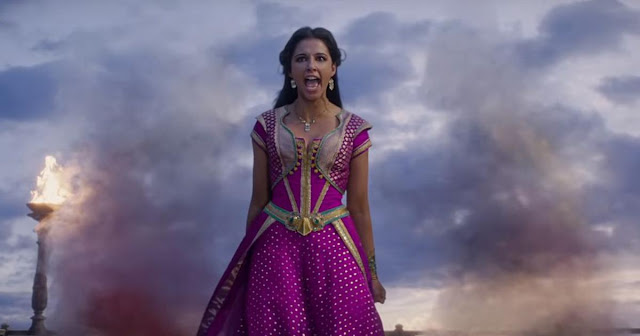Review: Blood in the Snow
Blood in the Snow by Sarah Pennington was a recent recommendation that combines two stories about princesses in dire circumstances--"The Goose Girl" and "Snow White and the Seven Dwarfs." The title makes it sound more violent than it actually is. It refers to blood magic that the royal family wields in this Asian fantasy setting. The main character is more of a damsel in distress than most modern adaptations of these stories, but she uses her powers to even out the odds. It's a short and sweet book that combines both popular fairy tales with Asian culture.
Princess Baili is a gentle princess who rarely raises her voice and never wishes harm upon anyone. So, when her servants stop paying attention to her on a journey to a foreign kingdom, she tries not to complain. She is confused, but it is only after the royal caravan arrives at their destination that she demands to know why everyone is ignoring their princess. That is when she learns that her stepmother has stripped her of her power and intends to get rid of her. Due to her meek and mild manner, Baili has little desire to fight back, so she allows her handmaiden, Lanwen, to take her place as princess and hides away with the first family that provides her shelter. She does not intend to tell her hosts her true identity, but when one of them recognizes her, she is left with no choice. They decide to make her the new goose girl so she can stay hidden in plain sight with an easy job.
This book bypasses most of the magical elements of "Snow White" and "The Goose Girl" and replaces them with a new magic system based around royal blood (hence the title). Baili is gifted with powers over water and wind, but she can only use them if three drops of her blood touch the desired element. Due to the nature of this ability, she uses it sparingly since she is not prone to cutting herself on a regular basis. The magical elements in this book serve as a unique twist compared to other adaptions, although they also make it somewhat predictable since it is easy to figure out how Baili will ultimately prove her identity and defeat her evil stepmother.
I did miss the talking horse from the original "Goose Girl" story, an element that was used in Melanie Cellier's The Secret Princess to perfection. Instead, Baili shares her secret with her keepers, who work behind the scenes to ensure that she still marries her prince and reveals her identity at the right time. One of them is a scrappy Japanese-coded girl named Chouko who teaches Baili about the darker side of the royals. Through Chouko, Baili learns how people from other kingdoms were mistreated by her own and forced to leave their homes to become servants. She promises to become a better ruler and makes use of Chouko's guidance to help the people of her kingdom.
Blood in the Snow is a fun adventure and a quick read for those of you who are looking for a fast fairy tale fix. It has a docile Asian heroine with unique powers and takes place in a lush Asian setting. If you're looking for more fairy tale reading materials this weekend, check out this great sale for fifteen free sweet fantasy romance books, including some favorites from A.G. Marshall that I've reviewed previously on this blog! Happy reading!












Comments
The author has another book which is a Steampunk rapunzel retteling called Mechanical Heart which is based more on friendship than romance.
By the way I've noticed that a lot of the fantasy you like is of the noblebright type!
What is the noblebright type? I've never heard that expression before!
It consists of a movement that is the counterpart of the Grimdark trend of current fantasy which is: dark, gritty, violent, hopeless, with a love for antiheroes or protagonists who not seek precisely to do the right thing...in princess language. protagonists who are of the "villain" type and not princess.
In contrast, Noblebright is a proposal for worlds that can be dark or have bad things but where hope prevails, in which the protagonists will do the right thing and preferably have a good heart from the beginning, where a small gesture of kindness counts and is possible even finding ways to defeat the villain that are non-violent or where the villain is redeemable.
In short it is a genre where no matter how dark things are at the core there is hope that they may or may not be gritty but where that is not the main point. It is a world where characters of traditional princesses or Samurai jack with their code of honor can shine and be role models.
For example (although I already said that not all worlds of noblebright are nice and bright) examples of this are the world of Sofia the first, My little ponny, Winx club, Middle earth of the lord of the rings, Narnia, AG Marshall and her princess books (and many others like that).
Grim dark is more like "game of thrones" then there are several classifications in between. But in summary: while Grimdark is the most pessimistic, gritty and cruel side of fantasy, Noblebright is the most hopeful and positive.